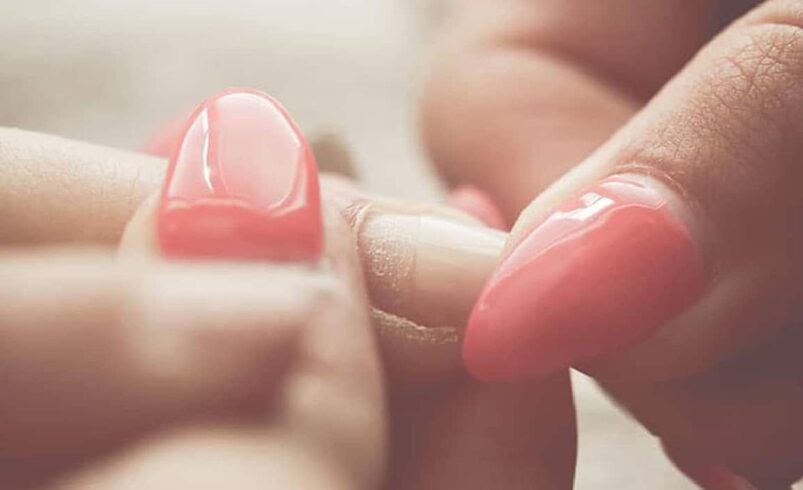How to Remove Gel Extension Nails
It is not as daunting as it seems to attempt to remove nail extensions at home but I have done it on a number of occasions because I did not visit a salon to save money. Regardless of whether you are removing gel tips or acrylics that are chipping on their own, making sure you do it safely to leave your natural nails untouched and healthy. I will also take you on a tour through actual techniques that actually work, including acetone dips, milder tricks, as well as others, so that you can do it without the scene.
Nail extensions such as gel or acrylic may look killer, however when it is time to wear, the nails are forced off resulting in broken nails or skinny nails below. I have also been taught the lesson that patience is always worthwhile, and having the correct tools in the beginning is everything. We will discuss the simplest tricks to the no-acetone tricks and will get tips on it as well as my experimentation and what I have read on the internet.
At the end, you will not fear trying to figure out how to take off nail extensions on your own conditions. Just to get those nails in order.
How to Remove Gel Extension Nails
I use gel extension nails as my standby polished nails that do not require much effort, but they are difficult to remove. Several attempts were required to nail it without breaking my cuticles. The trick lies in loosening the gel bond with little scraping-impairing of the gel- think soaking. The first step is to trim the extensions with clippers so that the work is much faster and less messy.
When clipped, take pure acetone, cotton balls and strips of foil. Wet a cotton ball with acetone and apply it to every nail and then wrap it with foil. This cages the heat and hastens the softening- leave it 10 to 15 minutes. I have discovered that it works quicker when you warm up the bowl of acetone using hot water however, avoid microwaving it.
The soak should ensure that the gel is lifted by using a wooden stick or your finger after the soak. Sticky bits can be removed by a short-cut buff with a soft file. Immediately after that moisturize with cuticle oil to seal in the moisture it will be worth it to your nails.
To be on the safe side, never pour the acetone on a large area when in case your skin is sensitive. Removal of gel can leave things dry and thus I have lotion. And keep in mind that when the extensions are very thick, you may need to use two rounds, but it is worth having healthy nails on the inside.
How to Remove Nail Extensions at Home with Hot Water
One of those old-fangled tricks that has surprised me with the success rate of acrylics or softer gels is how to use hot water to remove nail extensions at home. It is chemical-free, which is enormous provided that you are staying clear of strong perfumes or inflated skin. Add a drop of dish soap to a bowl of steaming hot water and submerge your hands in it 10 minutes at a time.
During the time spent in the water, the glue that binds these extensions is also softened by the heat. I have been scrolling my phone in the step and by the end, the tips become more loose. Shake them softly with a wooden orange stick; do not pull. And in case they are stubborn, let it soak another five minutes and re-attempt again–be patient or you will lose your natural nail bed.
This approach is bright in fast touch-ups although it can be combined with oil in case of stubborn spots. Apply olive oil on the edges after soaking to loosen further. It is risk-averse, but when your water becomes too cold, add more water to maintain the steam.
Hot water elimination does not happen immediately as acetone, and thus, allow 20 minutes. I like that it is spa-like, but keep the temperature down to prevent burns. In general, it is a good entry point to those who are getting familiar with the process of extracting nail extensions at home.
Remove Acrylic Nails At Home: Step By Step How-To Tutorial
To do acrylic nails at home, it begins with the preparation step: clip them as short as possible to make them less bulky. The acrylics are firmer than the gel and thus filing the top layer a little bit with a file with 180 grit polishes it and therefore enhances a better uptake of it. I do not do it every time and, when everything takes forever, I regret it.
Then pour into a glass bowl (metal bowls are also o.k.) 100 per cent acetone, and put that in a larger bowl of hot water to warm. Wet your nails then 15-20 minutes; the work is done by the vapors. Close to multitasking, wrap tips in cotton that has been dipped in acetone, but the bowl technique is comfortable in the hands.
By the time time runs out, the acrylic can be easily removed with a weak force. Apply a pusher with edges, and polish off the residue. Use a nutritious cream to follow the step I have used vitamin E oil to restore energy. This is also done step-by-step to maintain low damage in the case of slow progress. Acrylic soak-off is stingy and should be ventilated. And it is empowering as you realise clean nails come out.
How To Remove Nail Extensions At Home
The art of nail extension removal at home will always come down to a matter of trying to match the process to your type gel, acrylic, or dip powder all have their ways. I always prepare supplies: acetone, files, oil and foil. Clipping off extensions is a way of avoiding flying bits and soaking is efficient. Most of us use acetone wrap, the one that is saturated with cotton, foil it on, wait 10 minutes and peel. It is like mini spa treatment but with more positive outcome than prying. Electric files are faster to file, however when working with new people, use of hand tools is safer.
After removing, your nails may appear thin and therefore apply strengthener. I have observed growth spurts due to regular attention. This habit makes the process of taking nail extensions in the house no biggie. Differences are dependent on brand- There are gels that are easier to peel. Test and keep notes on what has worked in your off-the-record.
How to Remove Nail Extensions like a Pro
To take nail extensions off with the help of a pro tip, I recreate the atmosphere of a salon: I find a well-lit place and use a magnifying glass when needed to be more accurate. File the polished surface top first- it leaves the layers visible to be more quickly broken. Pros testify that it can reduce soak time by fifty percent.
Then use buffered acetone when pure stuff dries you up–it is weaker, but it works. To give it the extra push, wrap and heat over the foils with a warm towel. I have set it to 12 minutes and have hit flawless lifts.
Seal the deal with finish pro-style and a base coat. Cut as soon as possible- pros use nice oils, but jojoba can do miracles at home.
The methods of layering are important, heavier constructions require patience. On the one hand, it is necessary to practice first and gain confidence in the procedures of removing nail extensions at home.
Easy Ways to Remove Gel Nail Extensions
Gel nail extensions are simple to take off and offer easy methods of doing it without a complicated set of tools. One fave: the peel method when your gel is not too cured. Put a peel-off base on the next time, but in the meantime, soak in a little warm soapy water, five minutes to soften, and then remove at the edge. One more quickie: non-acetone remover like the gel specific peels- paint it on, leave it 10 minutes and wipe. One of them I picked up online and it helped me stay sane when traveling. It’s gentle on skin too.
To make it really easy, buff with your fingers and work dental floss under hard-to-reach places- sounds bizarre but it does not use a lot of force. Never let it go dry or it becomes brittle. These hacks make it easy to do it at home in order to remove nail extensions. Combine and customize according to your system.
How to Remove Nail Extensions at Home Without Acetone YouTube
The entirety of all the how to remove nail extensions at home demos on YouTube that made me unwindedly inspired my no-fuss routine. One of the videos that I viewed involved olive oil soaks, which were prepared by heating it, dipping fingers in 15 minutes then scraping lightly with a stick. It is painfully slow yet painless chemicals and my nails did not break off.
The other trendy video demonstrated vinegar-water mix: 50/50, leave to soak 20 minutes, and then buff. The acidity loosens bonds gently- I had tried it after the vacay and was relaxing. Artists usually put dish soap to give it more slip.
Electric file substitutes appear as well, however, use manual as a precaution. These videos demonstrate that you do not have to use acetone to be successful in one how to remove nail extensions video. Enter acetone-free gel removal in search engine to get more pictures- they bring steps to crystal point.
How to Remove Nail Extensions at Home Without Tools
The knowledge of how to remove nail extensions without the use of tools depends on household items- sheer ingenuity. The hot soapy water in a mug is miracle-working: soak 10-15 minutes, then get your fingernail to peel at the edges. It is simple and efficient with light extensions.
Apply cuticle oil or lotion around the base when wetting it it makes it easier to lift. I have rubbed it in the meantime, and scraps come off easier. No sticks? A paper clip should be bent to nudge.
In the case of gel, it is a good idea to steam your hands under a hot shower- wetness makes everything soft. Pat dry and peel slowly. This no-tool method is bright in case of emergencies.
Keep it gentle to avoid tears. It demonstrates the effectiveness of how to remove nail extensions at home by being bare-bones but spot-on.
Final Thoughts – How to Remove Gel Extension Nails
In conclusion, learning to do homemade takeoffs of nail extensions would mean having a chance to be creative in DIY manicures without commitment. There are hot water soaks, pro acetone wraps, and anything that suits you and keeps nails alive.
It is worth remembering that healthy practices such as moisturizing after removal create stronger growth with time. I swear by weekly oils now. Remain patient, and take pleasure in it.
And there you go, that is how you can take off nail extensions at home, without any drama.


